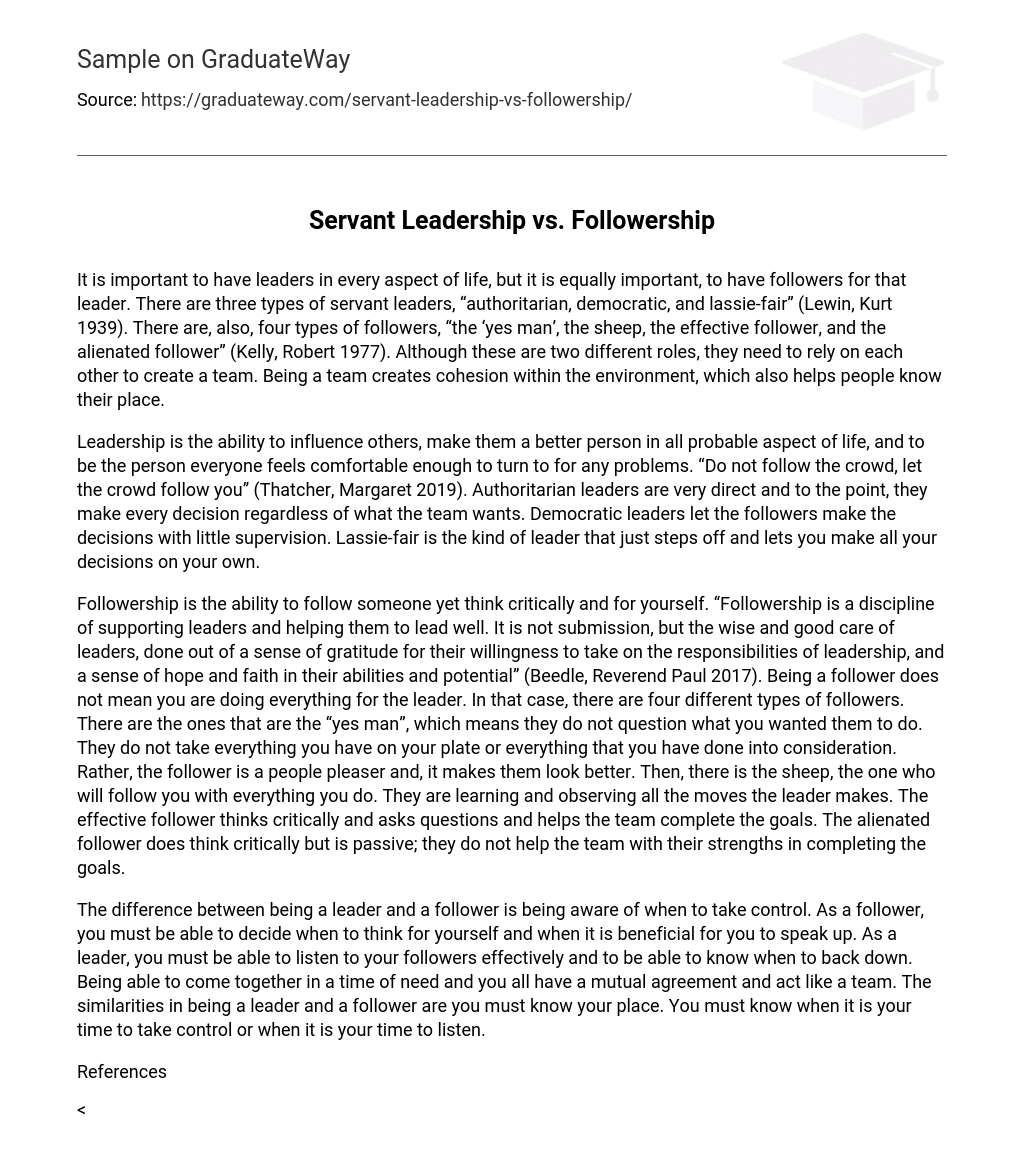It is important to have leaders in every aspect of life, but it is equally important, to have followers for that leader. There are three types of servant leaders, “authoritarian, democratic, and lassie-fair” (Lewin, Kurt 1939). There are, also, four types of followers, “the ‘yes man’, the sheep, the effective follower, and the alienated follower” (Kelly, Robert 1977). Although these are two different roles, they need to rely on each other to create a team. Being a team creates cohesion within the environment, which also helps people know their place.
Leadership is the ability to influence others, make them a better person in all probable aspect of life, and to be the person everyone feels comfortable enough to turn to for any problems. “Do not follow the crowd, let the crowd follow you” (Thatcher, Margaret 2019). Authoritarian leaders are very direct and to the point, they make every decision regardless of what the team wants. Democratic leaders let the followers make the decisions with little supervision. Lassie-fair is the kind of leader that just steps off and lets you make all your decisions on your own.
Followership is the ability to follow someone yet think critically and for yourself. “Followership is a discipline of supporting leaders and helping them to lead well. It is not submission, but the wise and good care of leaders, done out of a sense of gratitude for their willingness to take on the responsibilities of leadership, and a sense of hope and faith in their abilities and potential” (Beedle, Reverend Paul 2017). Being a follower does not mean you are doing everything for the leader. In that case, there are four different types of followers. There are the ones that are the “yes man”, which means they do not question what you wanted them to do. They do not take everything you have on your plate or everything that you have done into consideration. Rather, the follower is a people pleaser and, it makes them look better. Then, there is the sheep, the one who will follow you with everything you do. They are learning and observing all the moves the leader makes. The effective follower thinks critically and asks questions and helps the team complete the goals. The alienated follower does think critically but is passive; they do not help the team with their strengths in completing the goals.
The difference between being a leader and a follower is being aware of when to take control. As a follower, you must be able to decide when to think for yourself and when it is beneficial for you to speak up. As a leader, you must be able to listen to your followers effectively and to be able to know when to back down. Being able to come together in a time of need and you all have a mutual agreement and act like a team. The similarities in being a leader and a follower are you must know your place. You must know when it is your time to take control or when it is your time to listen.
References
- Lewin, Kurt (1939) Changing Minds. Lewins Leadership Styles.
- 13 July 2017. Transwish Indonesia. Followership Quotes http://transwishindonesia.com/followership-quotes/
- 2019 Goodreads, Goodreads. Leadership Quote (5870 quotes) https://www.goodreads.com/quotes/tag/leadership





